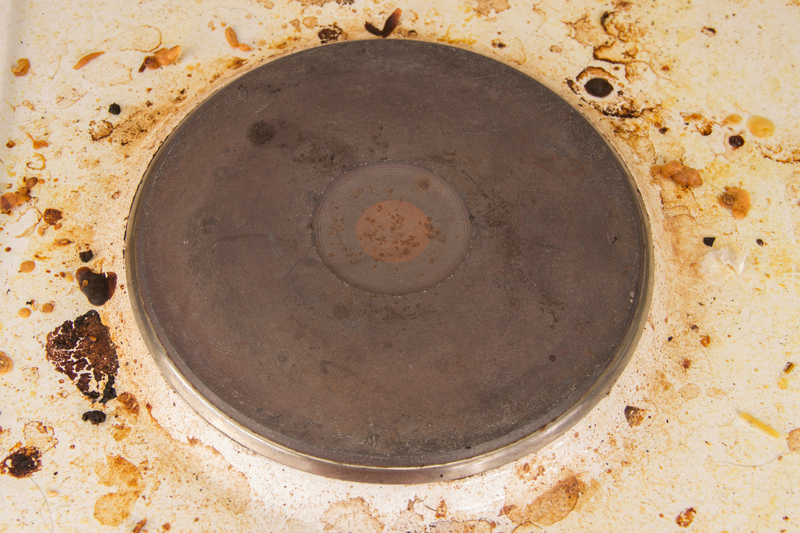The unknown risks of mold and mildew growth in your home
Posted on 24/07/2024
Mold and mildew are common household problems that most people tend to overlook. These fungi thrive in damp and humid environments, making our homes the perfect breeding ground for them. While they may seem harmless at first, mold and mildew growth in your home can lead to serious health risks and even cause structural damage if left unchecked. In this article, we will explore the unknown risks of mold and mildew growth in your home, and what you can do to prevent or eliminate them.
The dangers of mold and mildew
Mold and mildew are types of fungi that can grow on almost any surface, including walls, ceilings, floors, carpets, and furniture. They reproduce by releasing tiny spores into the air which can easily spread throughout your home. The presence of mold and mildew can have negative effects on both your health and the structural integrity of your home.
The most common health risks associated with mold and mildew exposure include respiratory problems such as allergies, asthma, coughing, sneezing, and irritation of the eyes, nose, and throat. These symptoms can be especially dangerous for young children, elderly people, and those with pre-existing respiratory conditions. Prolonged exposure to mold and mildew can also lead to more serious health issues such as fungal infections and toxic mold syndrome.
Apart from health risks, mold and mildew growth can also cause structural damage to your home. When left unchecked, they can eat away at building materials such as wood, drywall, insulation, and even concrete. This can weaken the structure of your home and potentially lead to costly repairs if not addressed promptly.

How to prevent or eliminate mold and mildew
Preventing mold and mildew growth is key in ensuring a healthy home environment. Here are some tips to keep these fungi at bay:
1. Keep your home well-ventilated: Mold and mildew thrive in damp and humid environments. Make sure to open windows, use exhaust fans, and run air conditioners or dehumidifiers to improve air circulation and reduce moisture levels in your home.
2. Fix leaks and moisture issues: Inspect your home regularly for any signs of leaks or excess moisture. Repair them immediately to prevent mold and mildew growth.
3. Clean up spills and messes promptly: If water or any other liquid spills on the floor, it is important to clean it up immediately to prevent mold growth. Make sure to also dry out wet surfaces thoroughly.
4. Use mold-resistant products: When renovating or building your home, consider using mold-resistant materials such as drywall, paint, and flooring.
5. Regularly clean and maintain your home: Regularly cleaning and dusting your home can help remove any potential food sources for mold and mildew. Pay special attention to areas that are prone to dampness, such as bathrooms, basements, and kitchens.
If you notice any signs of mold or mildew growth in your home, such as a musty odor, dark spots on walls or ceilings, or discoloration on surfaces, it is important to address the issue immediately. Here are some steps you can take to eliminate them:
1. Identify the source: Start by identifying the source of the problem. This could be a leaky pipe, a damaged roof, or poor ventilation.
2. Clean visible mold or mildew: Use a mixture of water and detergent to scrub away visible mold or mildew from hard surfaces such as tiles, walls, and countertops. Wear protective gear such as gloves and a mask while cleaning.
3. Use natural remedies: There are several natural remedies that can help eliminate mold and mildew without harsh chemicals. These include vinegar, baking soda, hydrogen peroxide, tea tree oil, and grapefruit seed extract.
4. Seek professional help: If the mold or mildew growth is extensive, it is best to seek professional help. They have the necessary equipment and expertise to completely eradicate the problem.
The pros and cons of mold and mildew
Pros:
- Mold and mildew play an important role in nature by breaking down dead materials.
- Some types of mold are used in food production, such as cheese and soy sauce.
Cons:
- Exposure to mold and mildew can lead to health issues, especially for those with respiratory conditions.
- Mold and mildew growth can cause structural damage to your home, leading to costly repairs.

Takeaways
1. Mold and mildew growth in your home can have serious health risks and cause structural damage if left unchecked.
2. Prevention is key in keeping these fungi at bay. Keep your home well-ventilated, fix leaks promptly, and regularly clean and maintain your home.
3. If you notice any signs of mold or mildew growth, take immediate action to eliminate them.
4. Seek professional help if needed.
Conclusion
The unknown risks of mold and mildew growth in your home can have a significant impact on your health and property. By understanding these risks and taking preventive measures, you can ensure a safe and healthy living environment for you and your family. Remember to always address any signs of mold or mildew growth immediately to prevent further damage. With proper care and maintenance, you can keep these fungi at bay and enjoy a healthier home.




